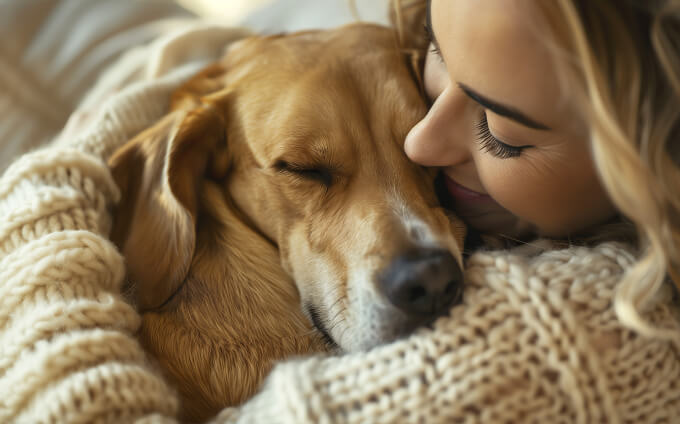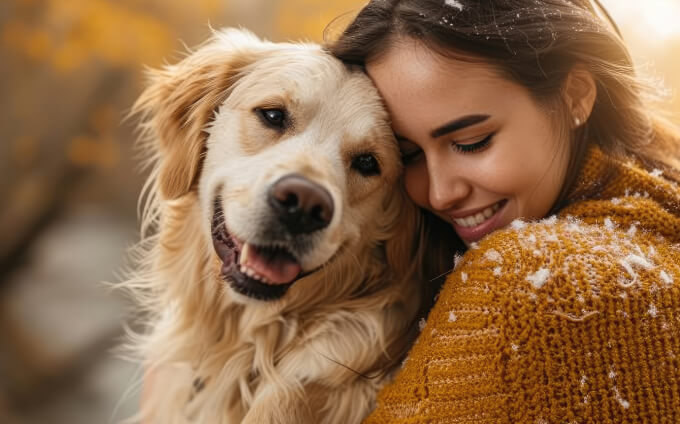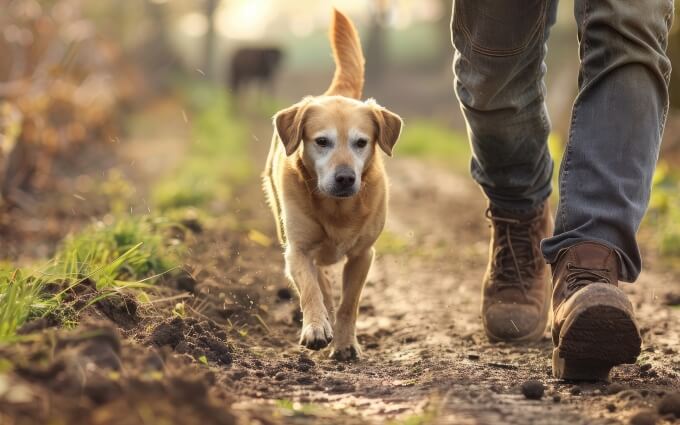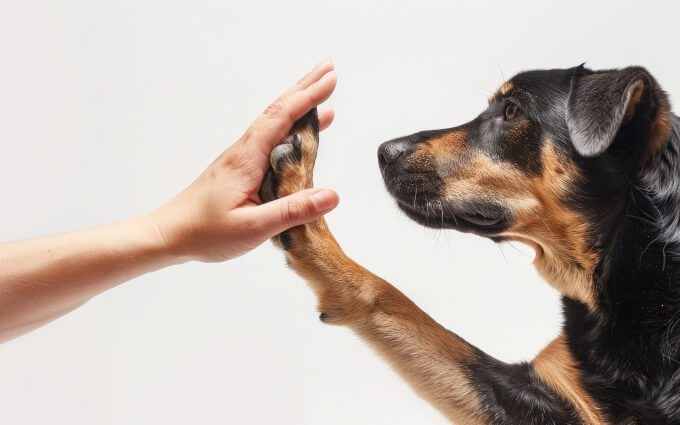- Home
- Tips & Tricks
- How to Teach Your Dog to Come When Called
How to Teach Your Dog to Come When Called
This guide walks you through the process, from selecting the right command to dealing with distractions, ensuring a strong recall every time.

- 48
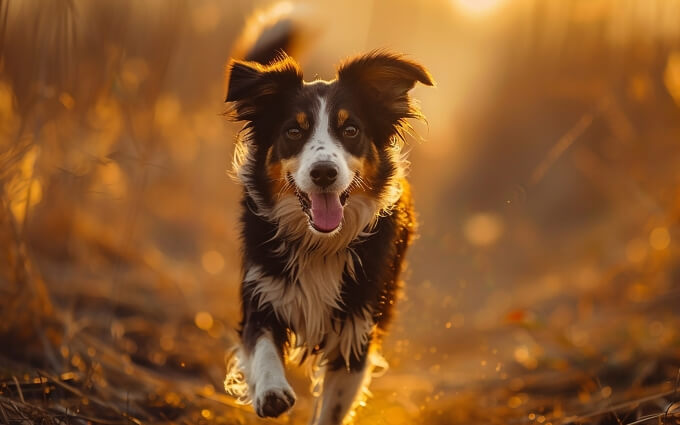
The Importance of Teaching Your Dog to Come When Called
Imagine calling your dog at the park, and they come running back to you with no hesitation. Sounds great, right? Teaching your dog to come when called, also known as recall training, is one of the most important skills you can instill in your furry friend. Not only does it keep them out of trouble, but it can also save their life in dangerous situations.
Recall training isn't just about convenience; it's about building a stronger bond between you and your dog. A dog that consistently responds to your call feels more secure and is less likely to develop behavioral problems related to anxiety or defiance.
Getting Started: The Basics of Recall Training
Before diving into training, gather the essentials: high-value treats (something irresistible like chicken or cheese), a clicker if you use clicker training, and a leash. Starting in a distraction-free environment is key to ensuring your dog can focus solely on you.
Step 1: Choose the Right Command
- Select a clear and simple command like 'come' or 'here'. Make sure everyone in the household uses the same command to avoid confusion.
Step 2: Start Indoors
Begin in a quiet room. Call your dog's name followed by the command. The moment they start moving towards you, use your clicker (or a verbal cue like 'yes') and reward them immediately with a treat.
Building Confidence and Distance
Once your dog is consistently responding indoors, it's time to add some distance. Gradually increase the space between you and your dog, still keeping the environment controlled. Don't rush this step - patience is key. Reward every successful recall with enthusiasm and treats.
Step 3: Take It Outside
After mastering indoor recall, move to your backyard or a quiet park. Attach a long lead to give your dog freedom while still maintaining control. Call your dog, and when they come to you, celebrate as if they've just won the lottery! This keeps them motivated and eager to repeat the behavior.
If your dog gets distracted, gently guide them back with the lead. Reinforce the command with high-value rewards and gradually increase the level of distractions as they improve.
Dealing with Distractions
Real-world situations are full of distractions, from other dogs to fascinating smells. To prepare your dog, introduce distractions gradually. Start with minor distractions like toys or distant noises and work your way up to more challenging scenarios.
Step 4: Practicing in Different Environments
- Begin practicing recall in different places - like a park or beach. Start with the long lead, and as your dog becomes more reliable, allow them off-leash only in safe, enclosed areas.
- If your dog is struggling, return to an easier environment and build up again.
Troubleshooting Common Issues
Even the best dogs can have off days. If your dog seems to ignore your command, check if they're too distracted or if the reward isn't enticing enough. Reassess your environment and adjust your strategy - sometimes, stepping back to a simpler setting can help.
Step 5: Reinforcing the Recall
- Continue to practice regularly, but avoid overusing the command. If the word 'come' loses its significance, your dog might start to ignore it. Keep training sessions short, fun, and always end on a positive note.
- For stubborn or shy dogs, use extra patience and reinforce their successes with even higher rewards. Building trust is crucial.
Maintaining a Reliable Recall
Congratulations! Your dog now comes when called, even with distractions. But training doesn't stop here. Regular practice, varying the environment, and continuing to use positive reinforcement are key to maintaining this behavior long-term.
Step 6: Keeping It Fun and Fresh
- Incorporate games into your recall practice, like hide-and-seek or calling your dog between two people. This keeps training engaging and enjoyable for both of you.
- Remember to always reward your dog for coming to you, even if they were slow or hesitant. Positive reinforcement will keep them eager to respond in the future.
Frequently Asked Questions about teaching dogs recall
How do I train my dog to come when called?
Start in a quiet space, use a cheerful voice, and reward your dog with treats or praise every time it comes to you.
Why doesn't my dog come when I call?
Your dog may be distracted, not fully trained, or may associate coming to you with something negative.
How long does it take to teach recall?
With consistent daily practice, most dogs improve their recall within a few weeks, but full reliability can take months.
What is the best command for recall training?
Short, clear commands like “come” or “here” work best, especially when used consistently.
Can older dogs learn to come when called?
Yes, dogs of any age can learn recall with patience, positive reinforcement, and consistent practice.
- 48
 Marcin Solgaard
Marcin Solgaard
Marcin is a true dog enthusiast! He is always seen with his 9-year-old boxer by his side. Marcin believes that dogs thrive on love, fun and positive experiences. On their daily adventures, people often stop Marcin to ask how his boxer is so happy and well-behaved. He happily shares tips on dog behavior and fun activities to create a happy and harmonious life with your dog.
-
Dog Behavior
 Does My Dog Know I Care About It?
Does My Dog Know I Care About It?Discover the ways your dog shows it knows you care and how you can reinforce that loving bond through simple actions and daily interactions.
 Cassandra DalgaardAug 05, 202444
Cassandra DalgaardAug 05, 202444 -
Food & Nutrition
 The Best Foods to Boost Your Dog's Immune System
The Best Foods to Boost Your Dog's Immune SystemTo keep your dog healthy and resilient, fueling their immune system with the right foods is key. In this post, we'll cover the top nutrient-packed foods that can give your dog's immune system the support it needs, helping them fend off illness and stay energetic.
 Marcin SolgaardOct 04, 20249
Marcin SolgaardOct 04, 20249 -
Dog health
 Which Emotions Do Dogs Actually Experience? Understanding Your Dog's Emotions
Which Emotions Do Dogs Actually Experience? Understanding Your Dog's EmotionsDogs experience a variety of basic emotions similar to those of a young child. Learn about the emotions your dog truly feels, how they express them, and what it means for your relationship.
 Cassandra DalgaardJul 30, 202478
Cassandra DalgaardJul 30, 202478 -
Tips & Tricks
 How to Train Your Dog to Walk Off-Leash
How to Train Your Dog to Walk Off-LeashThis guide will walk you through everything you need to know, from essential commands to mastering off-leash walks even in distracting environments
 Marcin SolgaardJul 02, 202451
Marcin SolgaardJul 02, 202451 -
Tips & Tricks
 How to Train Your Dog to Give Paw
How to Train Your Dog to Give PawTeaching your dog to give paw is a fun and rewarding experience that strengthens your bond. This guide walks you through the process with tips, tricks, and plenty of paw-sitive reinforcement.
 Marcin SolgaardApr 11, 202441
Marcin SolgaardApr 11, 202441 -
Puppies & Young dogs
 How to Puppy-Proof Your Home: A Complete Guide
How to Puppy-Proof Your Home: A Complete GuideBringing a new puppy home is thrilling, but keeping them safe means some serious puppy-proofing. This guide covers everything from securing hazardous items to creating a puppy-friendly zone, making your home a safe haven for your curious new companion.
 Michelle TorringOct 10, 202412
Michelle TorringOct 10, 202412 -
Food & Nutrition
 How to Choose the Right Diet for Your Allergic Dog
How to Choose the Right Diet for Your Allergic DogFind out how to select the perfect diet for your dog with allergies. Learn about elimination diets, hypoallergenic foods, and the best ingredients to keep your furry friend healthy and happy.
 Marcin SolgaardJun 09, 202427
Marcin SolgaardJun 09, 202427 -
Dog Behavior
 Why Your Dog Ignores You and How to Change It
Why Your Dog Ignores You and How to Change ItIs your dog ignoring you? Explore the reasons behind this behavior and actionable steps to bring back the focus, from training techniques to environmental adjustments.
 Marcin SolgaardJul 16, 202439
Marcin SolgaardJul 16, 202439 -
Tips & Tricks
 Are You Ready for Life with a Dog? Everything You Need to Know
Are You Ready for Life with a Dog? Everything You Need to KnowThis guide helps you determine if you're ready for a dog by exploring the responsibilities, financial requirements, and lifestyle changes necessary for successful dog ownership.
 Marcin SolgaardJul 31, 202433
Marcin SolgaardJul 31, 202433 -
Tips & Tricks
 How to Keep Your Dog Off the Furniture
How to Keep Your Dog Off the FurnitureEnsuring your dog stays off the furniture can be a challenge, but with the right techniques and consistency, you can create a pet-friendly environment that respects your space.
 Marcin SolgaardJun 24, 202439
Marcin SolgaardJun 24, 202439

